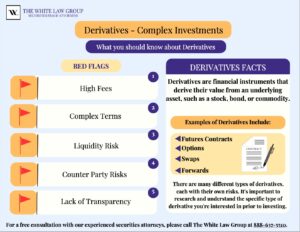What is Option Trading?
The following is a detailed guide on Option Trading. Option trading involves contracts that grant the buyer the choice, rather than the obligation, to purchase (via a call) or sell (through a put) an underlying asset at a set price on or before a specific date. The seller of the option commits to buying or selling if the buyer exercises their right. Options have an expiry date; once expired, they lose value and cease to exist. Like other investments, options can be traded through brokerage accounts.

Traders and professionals use options to manage risk by seeking income, speculating, or hedging against potential losses. For instance, a stockholder might buy a put option to protect against a potential drop in the stock price.
Both put and call options can be bought and sold. Initiating a trade involves an opening purchase or sale. An opening purchase means buying a call or put to start a position. To exit a trade, an investor does the opposite: closing a purchased option involves selling the same contract series, while closing a sold option entails making a purchase.
Options by Underlying Asset
Options available for U.S. investors cover various assets like stocks, indexes, debts, and foreign currencies.
A stock option contract typically signifies 100 shares of the underlying stock, but options can relate to diverse assets, from bonds to currencies to commodities.
Equity options are tied to stocks or similar products and specify a strike price at which the contract can be exercised.
Index options derive their value from an index like the S&P 500 or the Chicago Board Options Exchange’s Volatility Index (VIX). They are cash-settled, resulting in cash payments rather than exchanging securities like index futures. These options often follow a European-style trading pattern, settling at expiration based on the index value at market open or close.
An option’s price, called a premium, fluctuates based on various factors, typically increasing when the option moves further “in-the-money” and decreasing as it goes “out-of-the-money.”
Before delving into options trading, define your objectives clearly. Options can serve different purposes in portfolios. Having a specific goal helps narrow down suitable strategies—be it seeking more income from stocks, protecting portfolio value during market declines, or achieving other objectives. The effectiveness of an options strategy depends on aligning it with your goals.
Puts Calls: Definition and Explanation
Put Option – This contract grants the owner the right to sell the underlying stock at a specified price (known as the strike price) within a fixed period until it expires. For the writer, it involves an obligation to purchase the stock from the option holder if the option is exercised.
Call Option – A financial agreement that gives the buyer the right (but not the obligation) to purchase a stock, bond, commodity, or another asset at a predetermined price within a specific timeframe. The seller of a call option is obligated to sell the asset if the buyer chooses to exercise the call.
A call buyer benefits when the underlying asset’s value rises, which can happen due to various factors like positive company news or during acquisitions. The seller profits from the premium if the price remains below the strike price at expiration, as the buyer typically won’t execute the option.
Put on a Call (PoC) – This compound option involves writing a put option on a call option. It involves two strike prices and exercise dates. If the put option is exercised, the holder will be short a call option, granting the right to buy a specific asset at a set price within a defined period.
The value of a put on a call moves in an inverse relation to the stock price. It decreases as the stock price rises and increases as the stock price falls. Sometimes referred to as a split-fee option, a put on a call offers this unique characteristic of changing value concerning the stock’s price movements.
Different Strategies – Covered Call vs. Naked Puts
Covered Call (Buy/Write) – This strategy consists of writing a call that is covered by an equivalent long stock position, while owning the underlying stock. This generates income (the premium) for the investor with the risk of potentially losing the upside appreciation of the shares if the option is exercised and the investor must sell their shares. An investor who buys or owns stock and writes call options in the equivalent amount can earn premium income without taking on additional risk. The premium received adds to the investor’s bottom line regardless of the outcome. It offers a small downside ‘cushion’ in the event the stock slides downward and can boost returns on the upside.
Predictably, this benefit comes at a cost. For as long as the short call position is open, the investor forfeits much of the stock’s profit potential. If the stock price rallies above the call’s strike price, the stock is increasingly likely to be called away. Since the possibility of assignment is central to this strategy, it makes more sense for investors who view assignment as a positive outcome.
Because covered call writers can select their own exit price (i.e. strike price plus premium received), assignment can be seen as success; after all, the target price was realized. This strategy becomes a convenient tool in equity allocation management. The investor doesn’t have to sell an at-the-money call. Choosing between strike prices simply involves a trade-off between priorities.
Uncovered Call – An uncovered call is a situation where an investor sells a call option without owning the underlying stock and, therefore, if the contract is exercised, must purchase the shares on the market, regardless of how high the price has gone up, and then sell them at the strike price. The maximum loss for the writer of an uncovered call, also known as a naked call, is theoretically unlimited.
An option’s value is formed by the difference between the fixed strike price and the market price of the underlying security, known as the option’s “moneyness”.
Intrinsic Value – In relation to options, intrinsic value is the value of an option if it were to expire immediately with the underlying stock at its current price. This is the amount by which an option is in-the-money.
Intrinsic Value (Calls) – A call option is in-the-money when the underlying security’s price is higher than the strike price. The strike price determines whether an option has intrinsic value.
Intrinsic Value (Puts)– A put option is in-the-money if the underlying security’s price is less than the strike price. Only in-the-money options have intrinsic value. It represents the difference between the current price of the underlying security and the option’s exercise, or strike price.
Maximum gain: strike price – stock purchase price + premium received; Maximum loss: stock purchase price – premium received (substantial)
Naked Puts – a naked put is an options strategy in which the investor writes, or sells, put options without holding a short position in the underlying security. A naked put is when a put option is sold by itself (uncovered) without any offsetting positions.
A naked put strategy is sometimes referred to as an “uncovered put” or a “short put” and the seller of an uncovered put is known as a naked writer. The primary use of this strategy is to capture the option’s premium on an underlying security forecast as going higher, but one which the trader or investor would not be disappointed to own for at least a month maybe longer.
When put options are sold, the seller benefits as the underlying security goes up in price. A naked put has limited upside profit potential and, in theory, downside loss potential that exists from the current price of the underlying security all the way down to if it goes to zero. A naked put’s breakeven point for the writer is its strike price, plus the premium received.
You decide whether to buy or sell and choose a call or a put based on your objectives as an options investor. Beyond puts and calls, options contracts vary in their underlying assets and longevity. Try to review a well-thought-out set of “what if” scenarios before putting any money at risk
What is FINRA?
FINRA (Financial Industry Regulatory Authority) plays a critical role in ensuring the integrity of America’s financial system – all at no cost to taxpayers. Working under the supervision of the Securities Exchange Commission, FINRA:
- Writes and enforces rules governing the ethical activities of all registered broker-dealer firms and registered brokers in the U.S.
- Examines firms for compliance with those rules;
- Fosters market transparency; and
- Educates investors.
What does FINRA do?
FINRA undertakes these efforts to protect the investing public against fraud and bad practices. If your broker has given unsuitable investment advice and you have suffered losses you may be able to recoup your losses through FINRA Arbitration.
Five Steps to Protecting Market Integrity:
- Deter misconduct by enforcing the rules
- Detect and prevent wrongdoing in the U.S. markets
- Discipline those who break the rules
- Educate and inform investors
- Resolve securities disputes
FINRA Regulations regarding Option Trading
FINRA Rule 2360 governs option trading. It establishes the approval process members must comply with when opening a customer’s brokerage account for options, as well as the requirement of ongoing supervisory reviews for options accounts. In part, it covers the following: Flex Equity Options, Position Limits, Exercise Limits, Reporting of Options Positions, Liquidation of Positions and Restrictions on Access, Limit on Uncovered Short Positions, Restrictions on Option Transactions and Exercises, Rights and Obligations of Holders and Writers, Open Order “Ex-Date”, Delivery of Current Disclosure Documents, Confirmations, Transactions with Issuers, Restricted Stock.
FINRA Rule 4512 specifies the information a member must maintain regarding a customer.
FINRA Rule 2090 requires a member to use “reasonable diligence” when opening and maintaining each account and to know the “essential facts” about each customer.
FINRA Rule 3310(b) requires broker-dealers to establish and maintain a written Customer Identification Program to verify the identity of its customers.
FINRA Rule 4210 sets forth the maintenance margin requirements for options transactions.
*Notice from FINRA has also been given to also provide the customer with the options disclosure document available on the Options Clearing Corporation’s website. The Notice also reiterated to their members the obligations under Regulation Best Interest when making recommendations of options transactions to retail customers.
Options Trading – What are the risks?
Trading options can come with significant risks. These risks vary greatly based on whether you’re buying or selling options and can include significant risk of loss beyond your initial instrument.
That’s in part because options can provide leverage. For a premium that’s small relative to the underlying security or index, investors can gain exposure to a relatively large contract value since a contract equates to 100 shares of the underlying asset. On the upside, investors can see a large percentage gain from small percentage moves in the underlying asset. This leverage can be magnified to the downside as well.
Options trading carries risk and requires specific approval from an investor’s brokerage firm. For information about the inherent risks and characteristics of the options market, refer to the Characteristics and Risks of Standardized Options—a disclosure document that brokerage firms are required to distribute to options customers—but below is also a brief overview.
Risks to Purchasers
Expiration Risk: In-the-money options contracts are generally automatically exercised at expiration. But to exercise a call option, the owner of the contract must have the funds to do so. Because one options contract is tied to 100 shares of stock, exercising a call can require substantial funds. For a contract with a strike price of $100, the owner of a call would need $10,000 to exercise.
Risks to Sellers
Assignment* Risk: The seller of an options contract may be assigned and required to fulfill the terms of the contract by either selling or buying the underlying security at the strike price. For the sellers of equity options, assignment can happen at any time.
Like other securities including stocks, bonds and mutual funds, options carry no guarantees. Be aware that it’s possible to lose the entire principal invested, and sometimes more. As an options holder, you risk the entire amount of the premium you pay.
As an options writer, you take on a much higher level of risk. For example, if you write an uncovered call, you face unlimited potential loss, since there is no cap on how high a stock price can rise.
Initial options investments usually require less capital than equivalent stock positions. Your potential cash losses as an options investor are usually smaller than if you’d bought the underlying stock or sold the stock short. The exception to this general rule occurs when you use options to provide leverage.
When Option Trading Goes Wrong
When things go wrong, as they often do, you need the proper tools and techniques to get your strategy back on the profit track. Example: A long call position that has experienced a quick unrealized loss. (can also be applied to a long put)
According to an article in Investopedia, one way to address unrealized loss is to average down* by purchasing more option, but this only increases the risk should [company name/fund name] keep falling or never return to the strike price. Averaging down by purchasing a second option with a lower strike price lowers the breakeven point, but adds considerable additional risk, especially if the price has broken below a key support level.
Another repair attempt (can be combined with the one above) is to roll down into a butterfly spread. The term butterfly spread refers to an options strategy that combines bull* and bear spreads* with a fixed risk and capped profit. These spreads are intended as a market-neutral strategy and pays off the most if the underlying asset does not move prior to option expiration. They involve either four calls, four puts, or a combination of puts and calls with three strike prices. The upper and lower strike prices are equal distance from the middle, or at-the-money*, strike price.
We have considered some ways to adjust a long call position gone awry; it could involve averaging down, another strategy involves rolling down into a bull call spread, or a bear spread, which is an options strategy used when one is mildly bearish and wants to maximize profit while minimizing losses; and lastly, is to roll into a butterfly spread (combining both bull and bear spreads) by keeping the original call, selling two at-the-money call options, and buying an in-the-money call option.
Whether used alone or in tandem, these repair strategies offer some flexibility in your trading plans. There will always be losses in options trading, so each trade must be evaluated in light of changing market conditions, risk tolerance, and desired objectives.
By properly managing the potential losers with smart repair strategies, you stand a better chance of winning at the options game in the long run.
Broker Due Diligence and Regulation Best Interest
The SEC’s Regulation Best Interest (Reg BI) is a rule under the Securities Exchange Act of 1934. It sets a higher standard of conduct called the “best interest” standard for broker-dealers and their representatives. This standard applies when they suggest any securities transaction or investment strategy involving securities, including recommending different types of accounts to retail customers. Essentially, it requires these professionals to prioritize the customer’s best interests when making such recommendations.
Under the “best interest” standard, broker-dealers are obligated to perform comprehensive due diligence when evaluating any investment. This comprehensive evaluation aims to empower investors to make well-informed decisions aligned with their best interests.
If your financial advisor fails to perform due diligence on an investment before recommending it to you, they could be held liable for investment losses. If your advisor unsuitably recommended Options, and you lost money, the securities attorneys at The White Law Group may be able to help you. You may be able to recover losses by filing a FINRA Arbitration claim against the brokerage firm that sold you the investment.
Free Consultation with a Securities Attorney
If you have suffered losses trading options and would like to speak to a securities attorney about the potential to recover your investment losses, please call The White Law Group at 1-888-637-5510 for a free consultation.
The White Law Group, LLC is a national securities fraud, securities arbitration, investor protection, and securities regulation/compliance law firm with offices in Chicago, Illinois and Seattle, Washington. To learn more about The White Law Group visit whitesecuritieslaw.com.
Glossary:
Assignment – the fulfilling of the requirements of an options contract. An option assignment represents the seller’s obligation to fulfill the terms of the contract by either selling or buying the underlying security at the exercise price.
At-the-money/at-the-money option – describes an option with a strike price that is equal to the current market price of the underlying stock.
Averaging Down – is an investing strategy that involves a stock owner purchasing additional shares of a previously initiated investment after the price has dropped. The result of this second purchase is a decrease in the average price at which the investor purchased the stock.
Bear Spread – a bear spread is an options strategy used when one is mildly bearish and wants to maximize profit while minimizing losses. The goal is to net the investor a profit when the price of the underlying security declines. The strategy involves the simultaneous purchase and sale of either puts or calls for the same underlying contract with the same expiration date but at different strike prices. A bear spread may be contrasted with a bull spread, which is utilized by investor expecting moderate increases in the underlying security. Bear Spread: Overview, and Examples of Options Spreads (investopedia.com)
Bull Spread – is an optimistic options strategy designed to profit from a moderate rise in the price of a security or asset. A bull spread (a variety of vertical spread) involves the simultaneous purchase and sale of either call options or put options with different strike prices but with the same underlying asset and expiration date. Whether a put or a call, the option with the lower strike price is bought and the one with higher strike price is sold. A bull call spread is also called a debit call spread because the trade generates a net debt to the account when it is opened. The option purchased costs more than the option sold. What Is Bull Spread? How It Works As Trading Strategy and Example (investopedia.com)
Call – the term “call” means an option contract under which the holder of the option has the right, in accordance with the terms of the option, to purchase the number of units of the underlying security or to receive a dollar equivalent of the underlying index covered by the option contract.
Compound Option – a compound option is an option for which its underlying security is another option. Therefore, there are two strike prices and two exercise dates.
Exercise – In options trading, to exercise an option means that the purchaser or seller of an options contract buys (in the case of a call) or sells (in the case of a put) the option’s underlying security at a specified price on or before a specified future date.
Expiration Date – The expiration date is the date on which an option expires. If the purchaser of an option doesn’t exercise the contract prior to expiration, they lose the premium paid for the contract. The purchaser no longer has any rights, and the option no longer has value.
Hedge – To hedge, in finance, is to take an offsetting position in an asset or investment that reduces the price risk of an existing position. A hedge is therefore a trade that is made with the purpose of reducing the risk of adverse price movements in another asset. Normally, a hedge consists of taking the opposite position in a related security or in a derivative security based on the asset to be hedged. For example, an owner of common stock may buy a put option to hedge against a possible stock price decline.
Position – The combined total of an investor’s open option contracts (Calls and/or puts) and long or short stock.
Premium – 1. Total price of an option: intrinsic value plus time value. 2. Often (erroneously) this word is used to mean the same as time value. A premium is the price paid by the purchaser of an options contract or the price received by the seller of an options contract. It’s determined by a number of factors, including the amount of time left until the contract expires and expectations for future volatility in the price of the underlying asset. The premium is a nonrefundable payment in full from the purchaser to the seller in exchange of the rights conveyed by the option.
Strike Price – Options contracts are derivatives that give the holders the right, but not the obligation, to buy or sell some underlying security at some point in the future at a pre-specified price. This price is known as the option’s strike price (or exercise price). For call options, the strike price is where the security can be bought by the option holder; for put options, the strike price is the price at which the security can be sold. The strike price (exercise price) is the price per share at which the underlying security may be purchased (in the case of a call) or sold (in the case of a put) by the option holder upon exercise of the contract.
Time Value – Time value is the portion of the option premium that is attributable to the amount of time remaining until the expiration of the option contract. Time value is whatever value the option has in addition to its intrinsic value.
Tags: derivatives, FINRA, guide, option trading Last modified: January 2, 2024








